I told you in other articles about my passion for antiqued finish and how you can totally transform a piece of furniture. Next I'll show you how I transformed a simple chest of drawers made from plop and you, in a piece of furniture that can fit in very well with the shabby chic. Originally, the dresser looked like this:
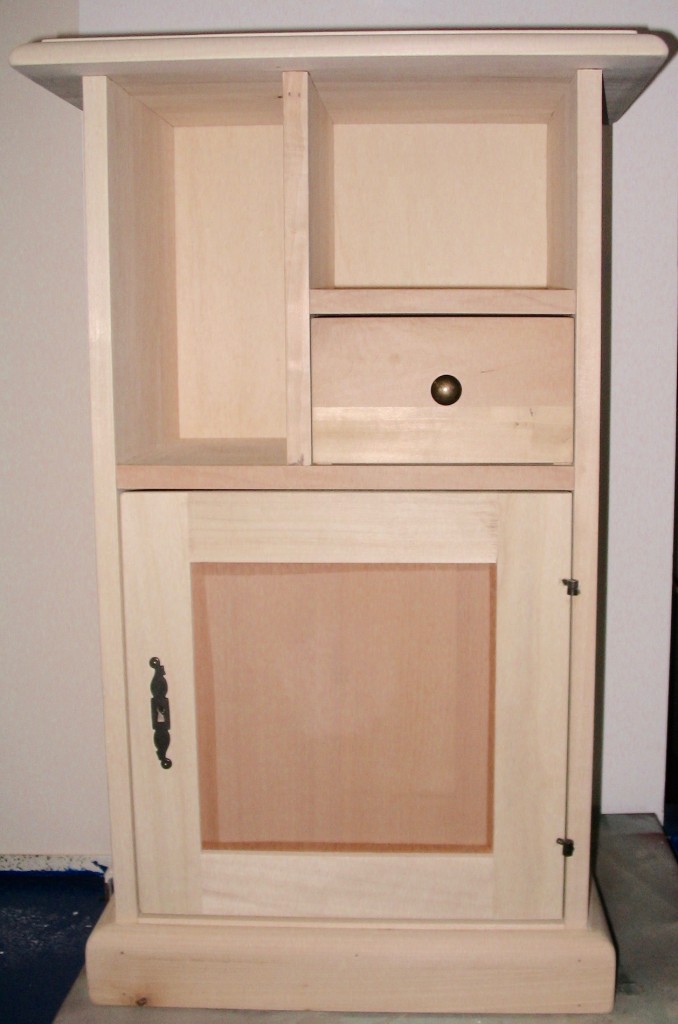
In order to 'age' it, I've weave the edges and the top with a rasp, hit it with a wrench and a nut bag, basically using many of the same techniques as white antiquing. Unfortunately I don't have a photo from this stage, but you can see the "aftermath" below, after applying the red walnut walnut stain. I applied it with a spray gun because it was easier for me, but it can also be done with a brush, rag or sponge, as the uniformity of the coat is not a priority.
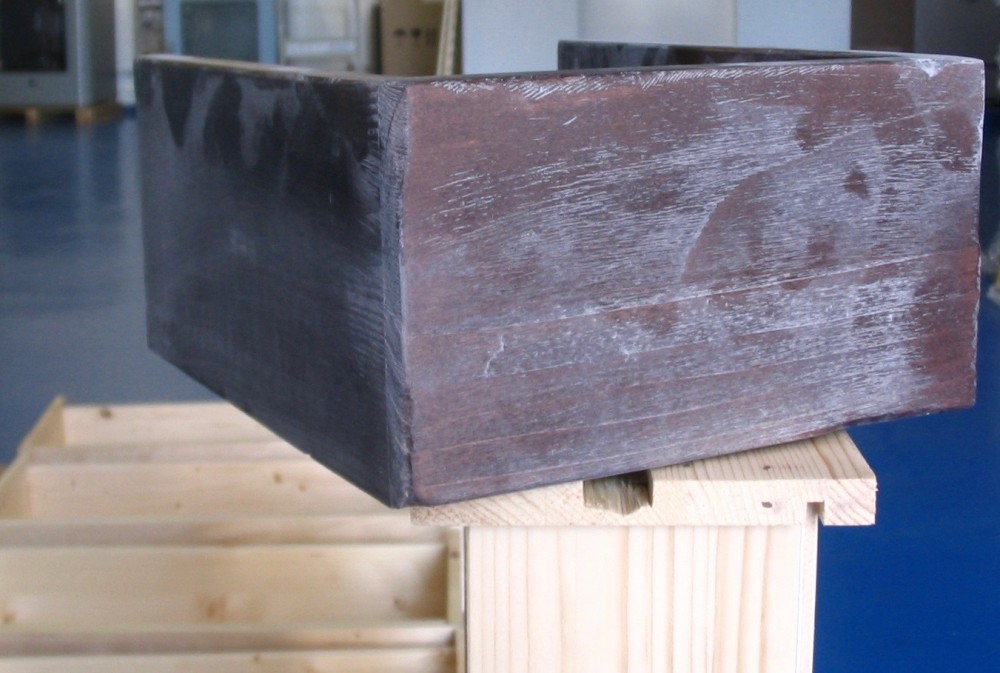
After drying, we came up with a clear coat. I worked with nitrocellulose primer, but you can also work very well with waterborne products. The primer is useful for fixing the color and making sanding between layers, a prerequisite for a pleasant cough.
On top of the colorless primer, I applied a cream primer over the entire surface of the dresser.
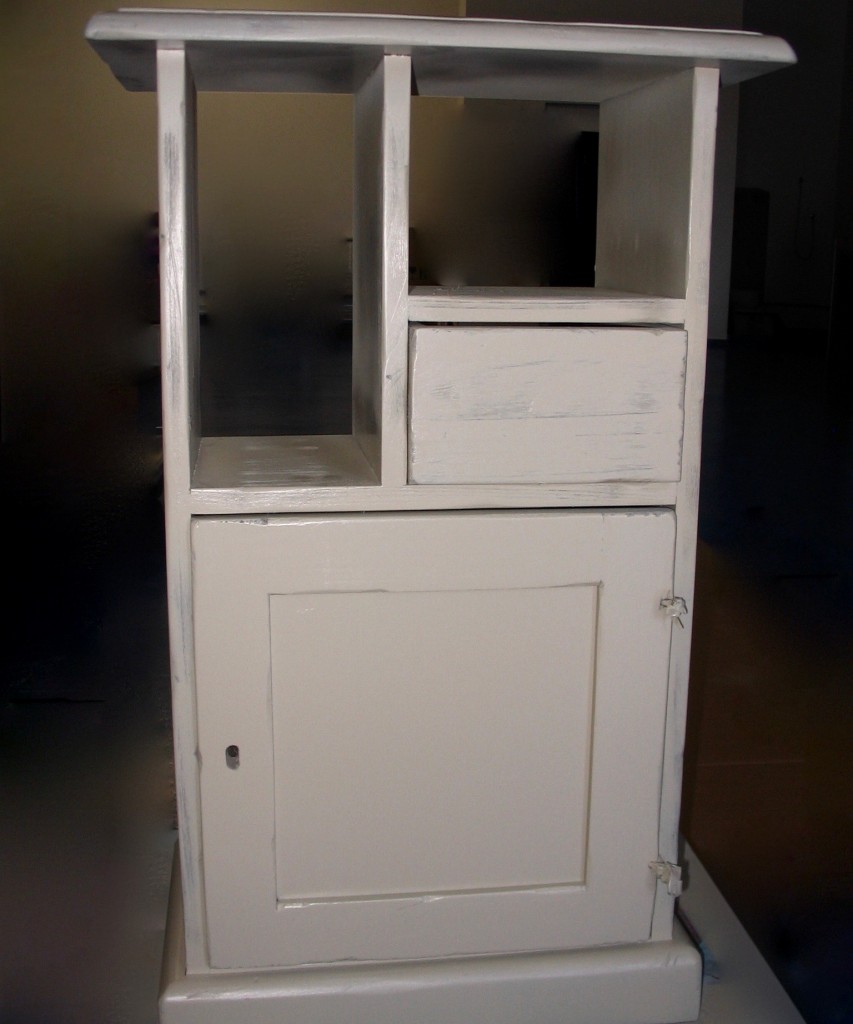
I waited for it to dry, then sanded it on the edges, sides, sides, top until I got it to the original color. At the end it looked like this:
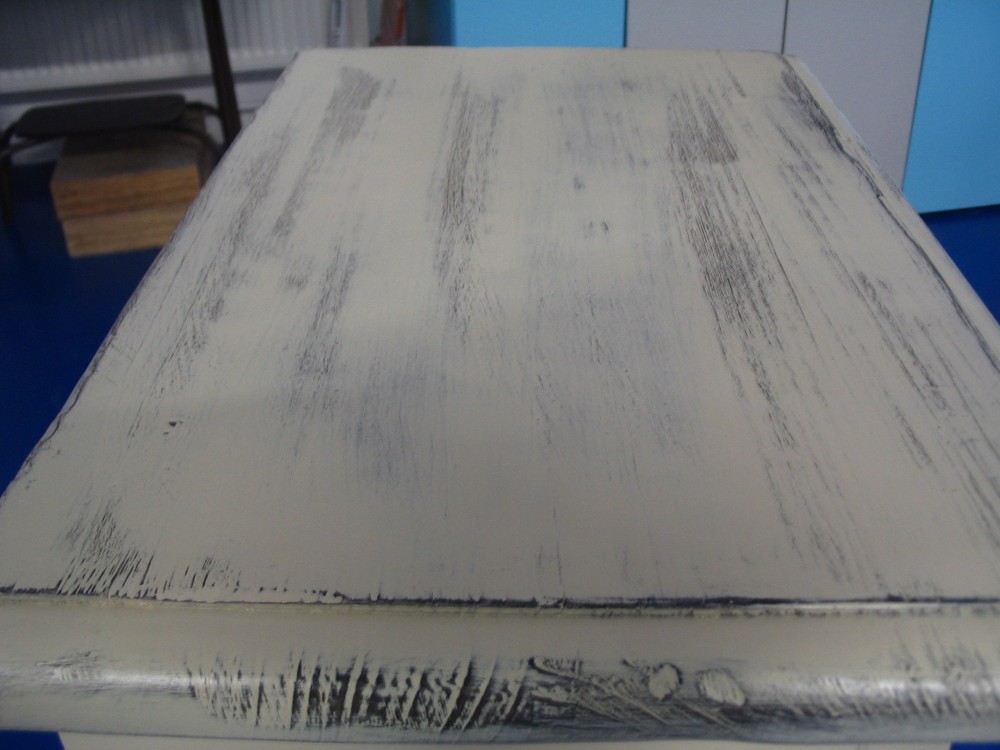
To emphasize the aged effect I sprayed a very fine coat of dark walnut aging patina over the entire surface and then sanded it. This "helped" the dresser look at least 50 years older.
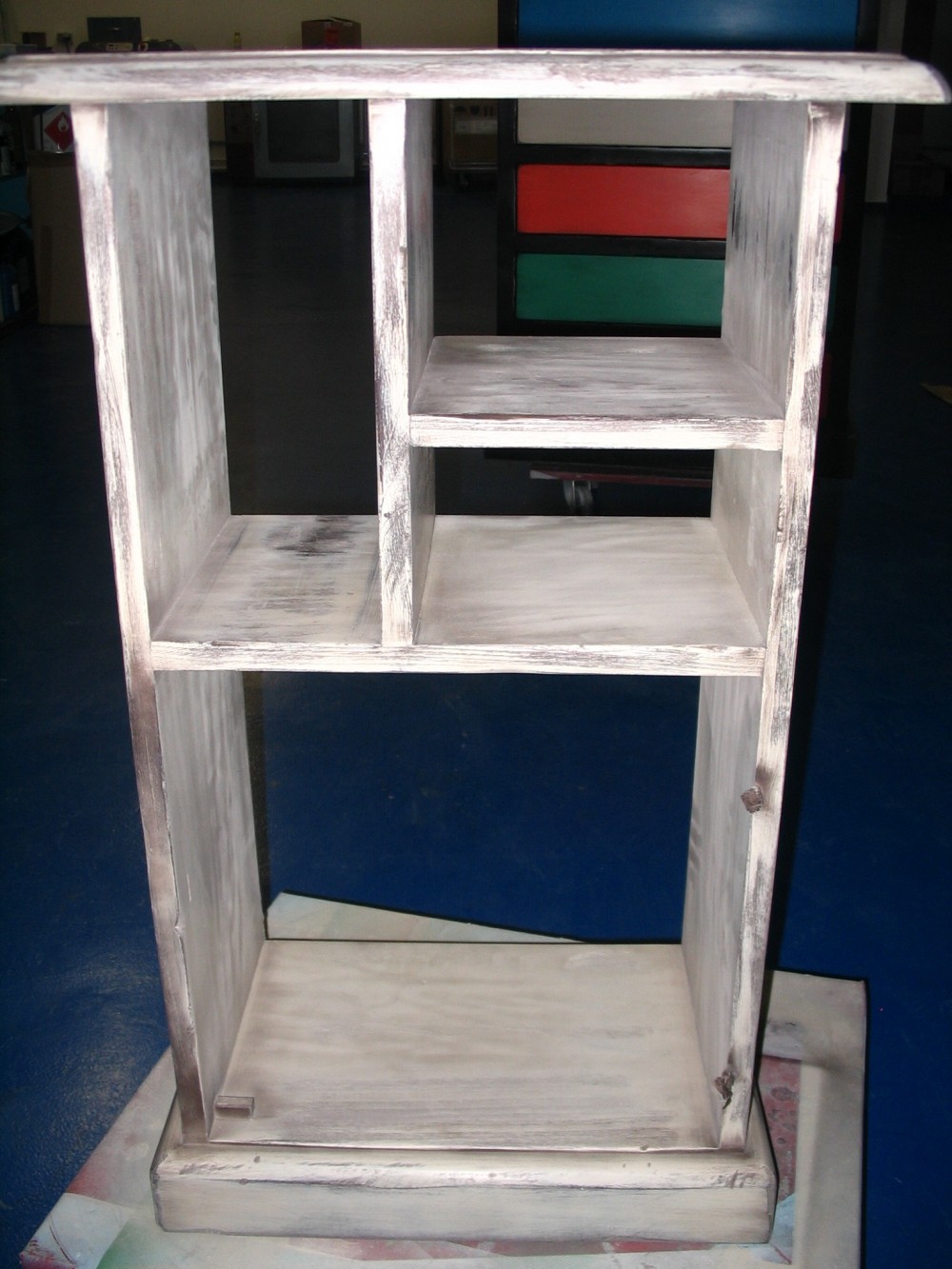
At the end I protected the whole effect with a clear acrylic clear lacquer with gloss grade 10 which gives a natural look to the film. The acrylic lacquer does not give that yellow tint and is very resistant to yellowing over time. That's why it's preferred for protecting light colors and special effects. I got a very "old" dresser, as seen below.
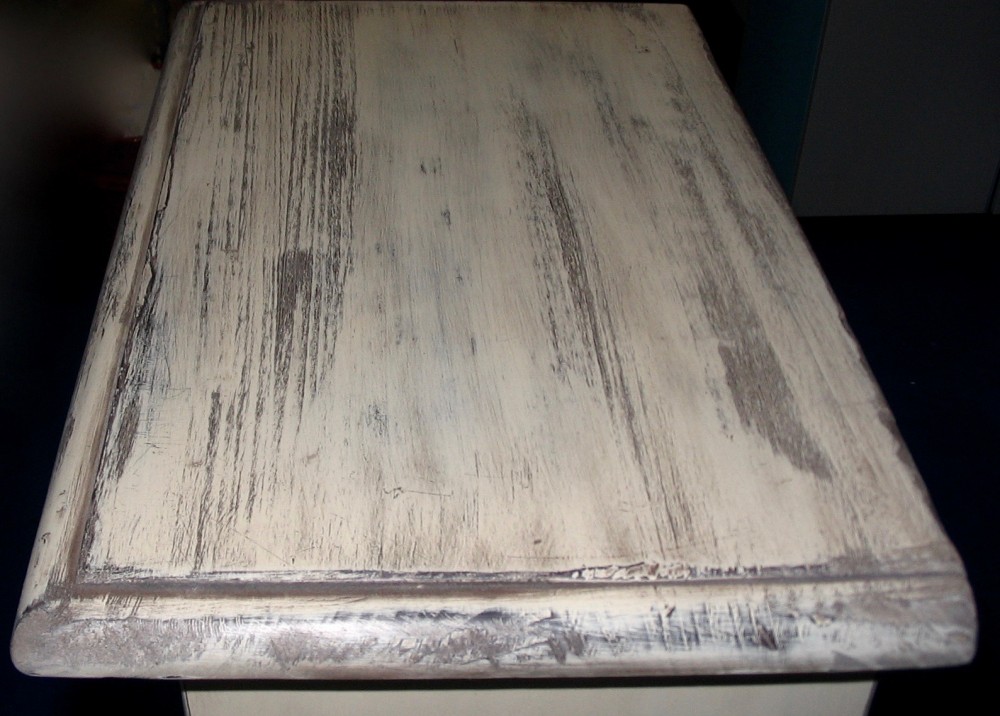
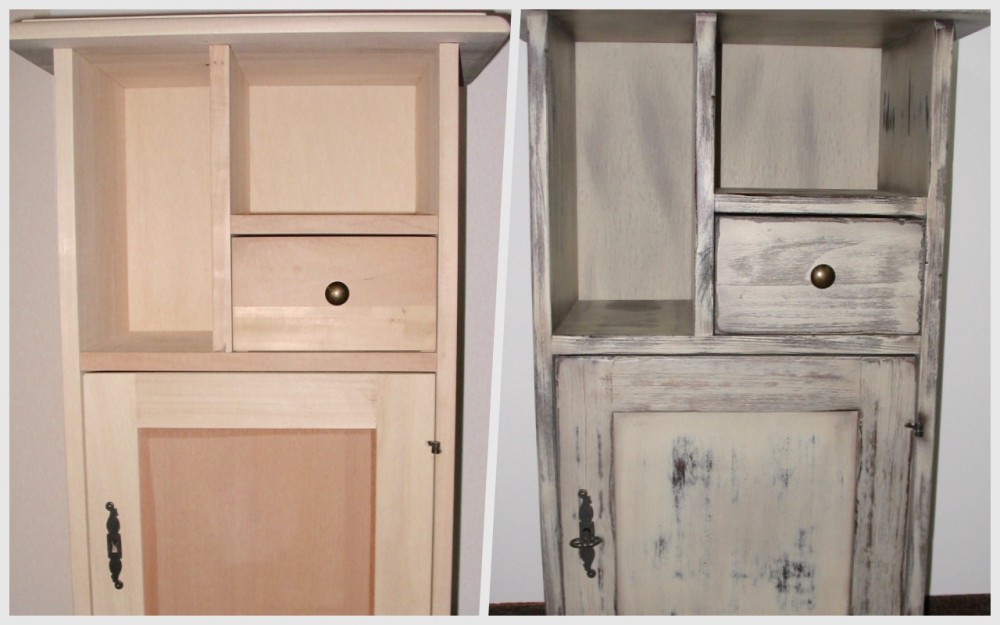
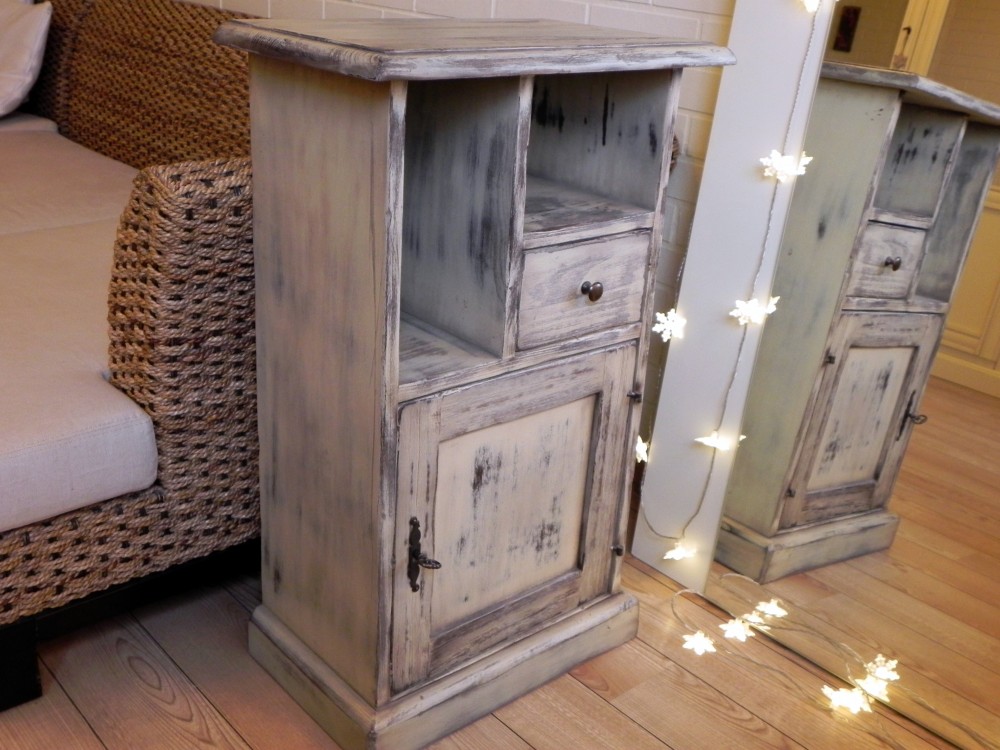
Isn't the transformation spectacular? If you are also interested in other effects or want to share your experiences in the field use the comments area of the post.
































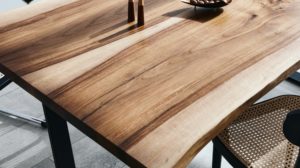

I am refurbishing my kitchen furniture purchased around 1982. The doors and drawer fronts are wood (it looks like it). I have tried to achieve the cracking effect on them. I have not had any results and I don't understand why. I have used both single and two component cracking varnish (these are hobby craft materials). It doesn't work. Could you give me a recommendation? I used a wax paint and a clear varnish.
Thank you for your time.
With cracking materials, quantity matters a lot. Too thick a layer will not crack after drying. Try to apply as thin a layer as possible. If necessary dilute (5-10%) the product with water (if water soluble) or with a universal solvent if solvent based and apply afterwards.
I wish you success!
Great article! Do you know the wood paste (Maserrini)? I'm going to buy a small box to make some ornaments just to change the look of a shelf or a simple cupboard.
I look forward to more articles about wood and refurbishment.
Thank you!
Hello, good article! Question: where do I find that dark walnut aging patina?
Thank you.
Hello. Congratulations on the things you are accomplishing.
I would ask if you could tell me what matt varnish I could use on light coloured wooden objects so that they do not yellow over time. I have been disappointed with all the products I have used so far. Thank you!
Hello,
Solvent acrylic varnishes do not change the colour of the wood and are very resistant to yellowing over time. In the industry they are especially used for finishing light-coloured wood species or chemically bleached wood. They have another advantage. There are also very low gloss versions, which give a very natural, unfinished look (they are also called natural effect varnish). Such varnishes are available from industrial wood varnish and paint companies or their distributors.
Thanks for your appreciation.
All the best!